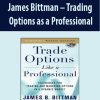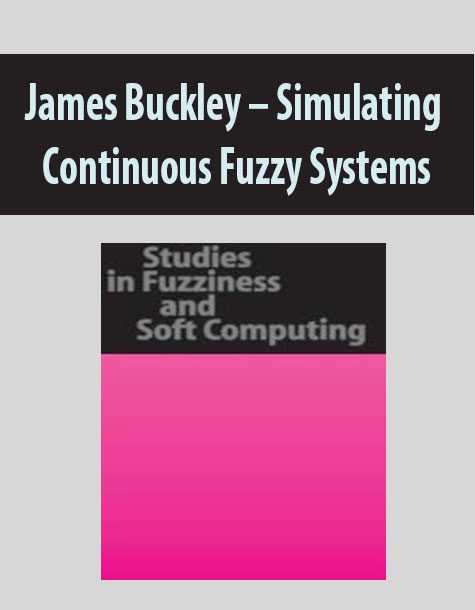James Buckley – Simulating Continuous Fuzzy Systems
$33.00
James Buckley – Simulating Continuous Fuzzy Systems
Product Delivery: You will receive a download link via your order email
Should you have any question, do not hesitate to contact us: [email protected]
James Buckley – Simulating Continuous Fuzzy Systems
- 1 Introduction This book is written in two major parts. The ?rst part includes the int- ductory chapters consisting of Chapters 1 through 6. In part two, Chapters 7-26, we present the applications. This book continues our research into simulating fuzzy systems. We started with investigating simulating discrete event fuzzy systems ([7],[13],[14]). These systems can usually be described as queuing networks. Items (transactions) arrive at various points in the s- tem and go into a queue waiting for service. The service stations, preceded by a queue, are connected forming a network of queues and service, until the transaction ?nally exits the system. Examples considered included – chine shops, emergency rooms, project networks, bus routes, etc. Analysis of all of these systems depends on parameters like arrival rates and service rates. These parameters are usually estimated from historical data. These estimators are generally point estimators. The point estimators are put into the model to compute system descriptors like mean time an item spends in the system, or the expected number of transactions leaving the system per unit time. We argued that these point estimators contain uncertainty not shown in the calculations. Our estimators of these parameters become fuzzy numbers, constructed by placing a set of con?dence intervals one on top of another. Using fuzzy number parameters in the model makes it into a fuzzy system. The system descriptors we want (time in system, number leaving per unit time) will be fuzzy numbers.
FROM THE BACK COVER
This monograph studies continuous fuzzy dynamical systems using crisp continuous simulation. A crisp continuous dynamical system is presented whose evolution depends on a system of ordinary differential equations (ODEs). The system of ODEs contains parameters many of which have uncertain values. Usually point estimators for these uncertain parameters are used, but the resulting system will not display any uncertainty associated with these estimators. Instead fuzzy number estimators are employed, constructed from expert opinion or from data, for the uncertain parameters. Fuzzy number estimators produce a system of fuzzy ODEs to solve whose solution will be fuzzy trajectories for the variables. The authors use crisp continuous simulation to estimate the trajectories of the support and core of these fuzzy numbers in a variety of twenty applications of fuzzy dynamical systems. The applications range from Bungee jumping to the AIDS epidemic to dynamical models in economics. This book is the companion text to “Simulating Fuzzy Systems” (Springer 2005) which investigated discrete fuzzy systems through crisp discrete simulation.
Delivery Method
– After your purchase, you’ll see a View your orders link which goes to the Downloads page. Here, you can download all the files associated with your order.
– Downloads are available once your payment is confirmed, we’ll also send you a download notification email separate from any transaction notification emails you receive from imcourse.info.
– Since it is a digital copy, our suggestion is to download and save it to your hard drive. In case the link is broken for any reason, please contact us and we will resend the new download link.
– If you cannot find the download link, please don’t worry about that. We will update and notify you as soon as possible at 8:00 AM – 8:00 PM (UTC+8).
Thank You For Shopping With Us!

![[Download Now] Options University – Technical Analysis Classes (Video](https://imcourse.info/wp-content/uploads/2022/02/Options-University-–-Technical-Analysis-Classes-Video-Manuals-100x100.jpg)



8 reviews for James Buckley – Simulating Continuous Fuzzy Systems
There are no reviews yet.